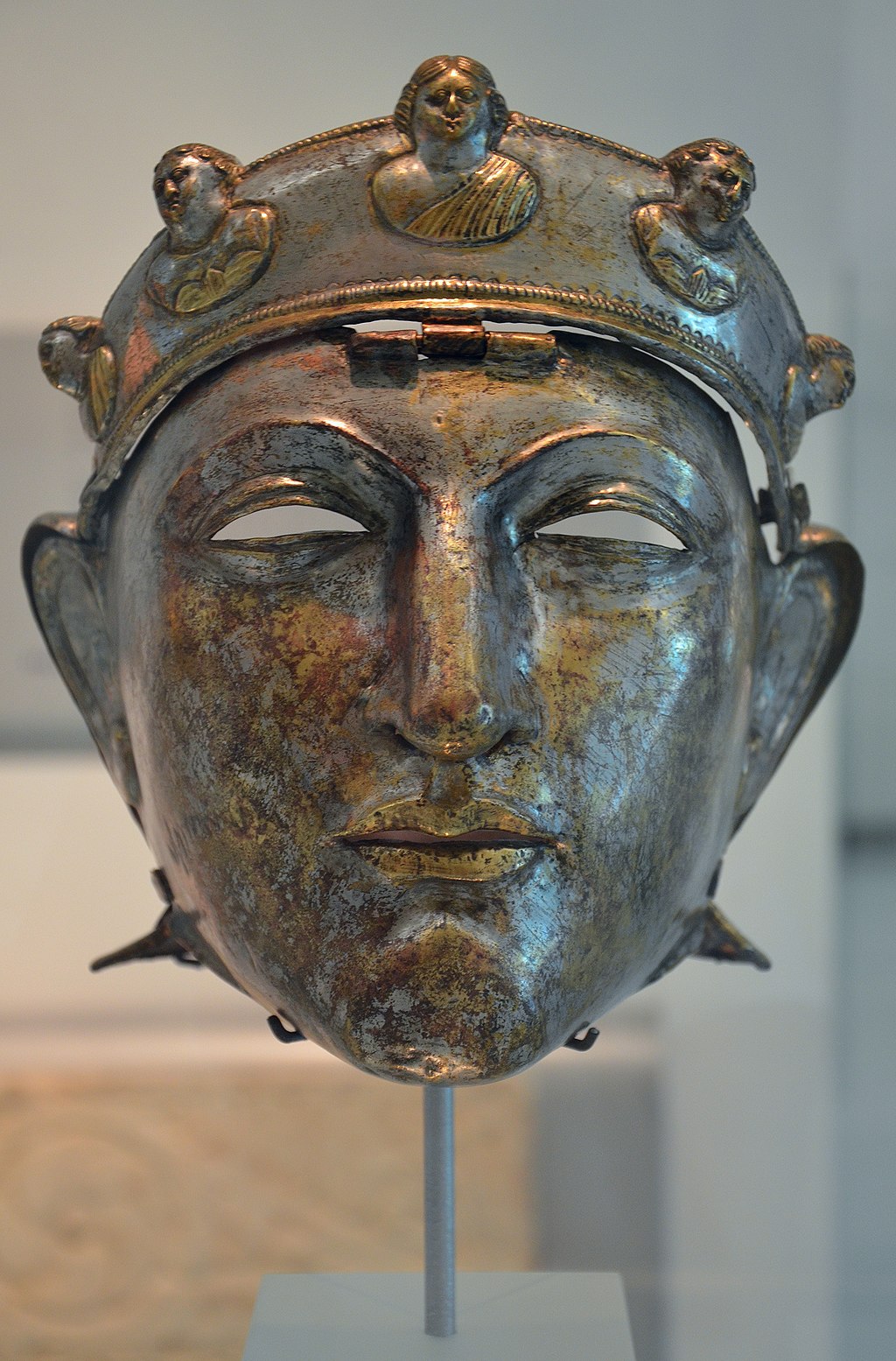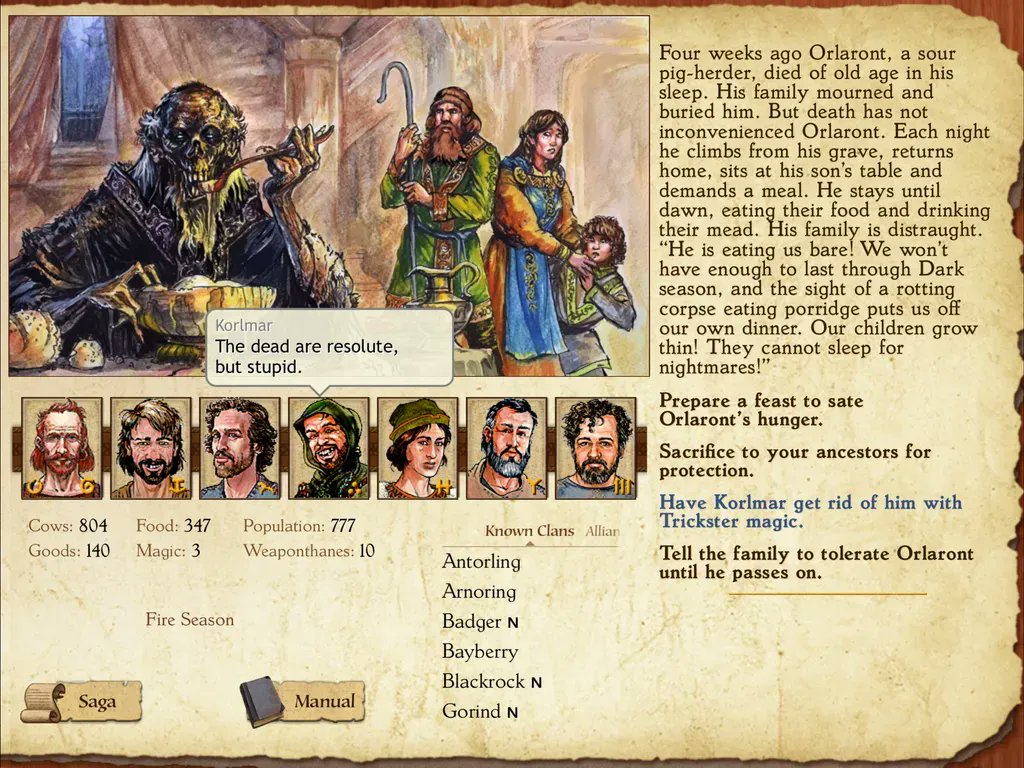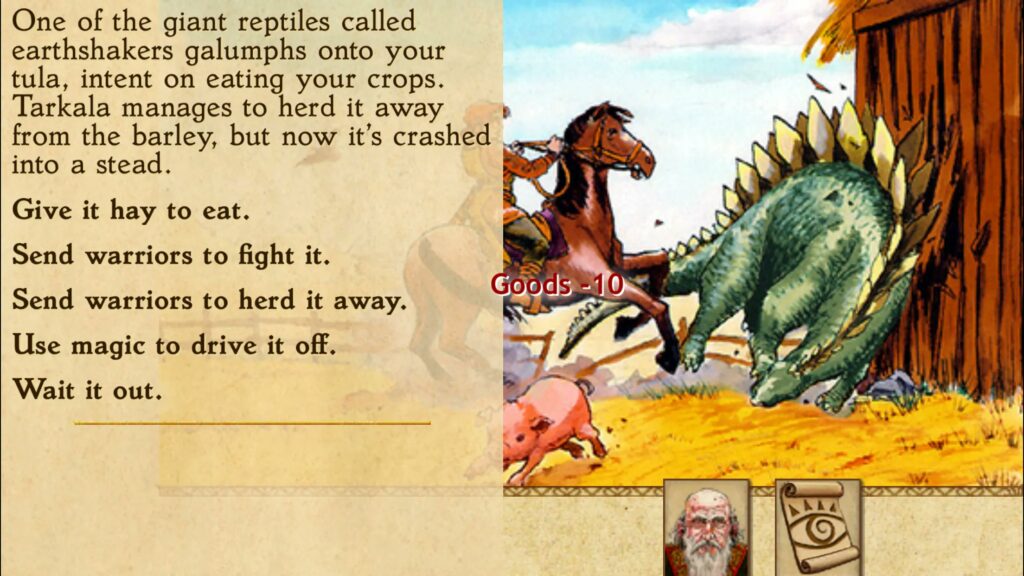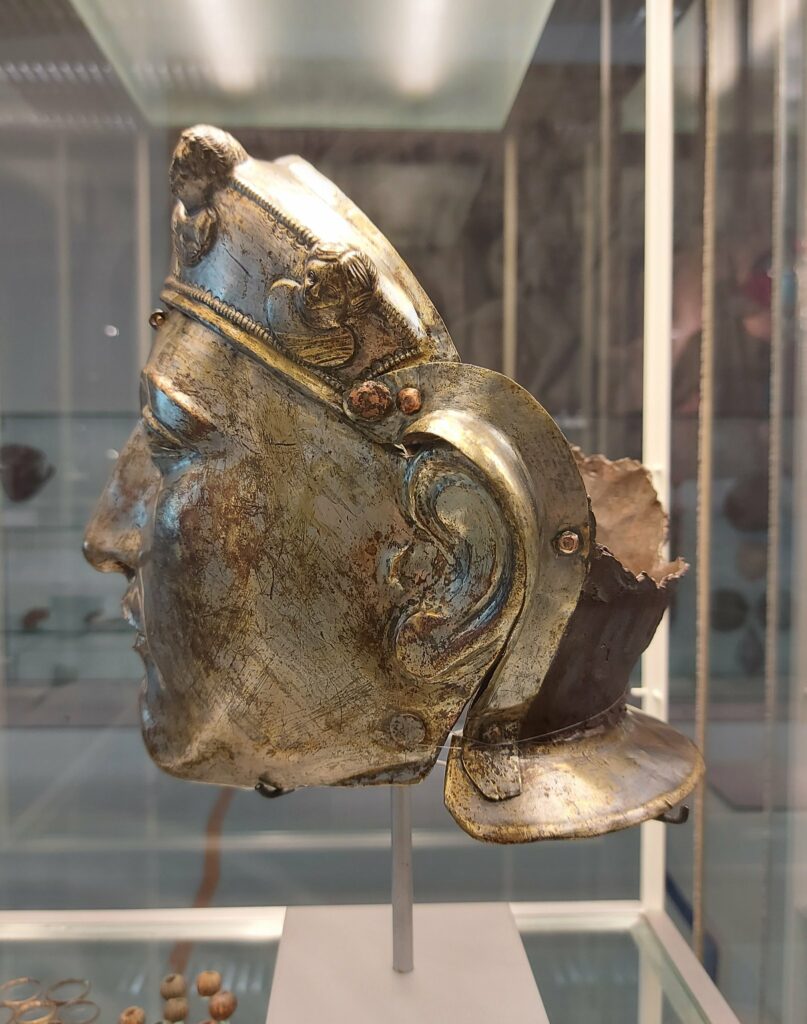Welcome to a new issue of the Journal of Runic Studies, the premier Malkioni publication for studies into the nature of Glorantha. If you haven’t subscribed yet, please consult with the spirit bound to the appropriate electronic page.
The newsletter is one day late this week because yesterday was the day of propitiation for the spirits of Darkness. The children dressed up as Underworld creatures and went around the clan’s tula with the local shaman. People gave symbolic food offerings meant to appease the dwellers below for the coming season. If all goes well, we will have uneventful weeks leading to Sacred Time…
Of course, now we also have a shitload of unhealthy food offerings left in our house, so that’s not going to be good for my health. But it will keep me warm as I finish editing our next podcast episode!
Chaosium News

Here are this week’s Chaosium news!
A New Hero: Season 2

Good news! James, Bridgett, and David’s campaign “A New Hero” is coming back for a second season! Season one (only five episodes long) is available here.
QuestWorlds Update
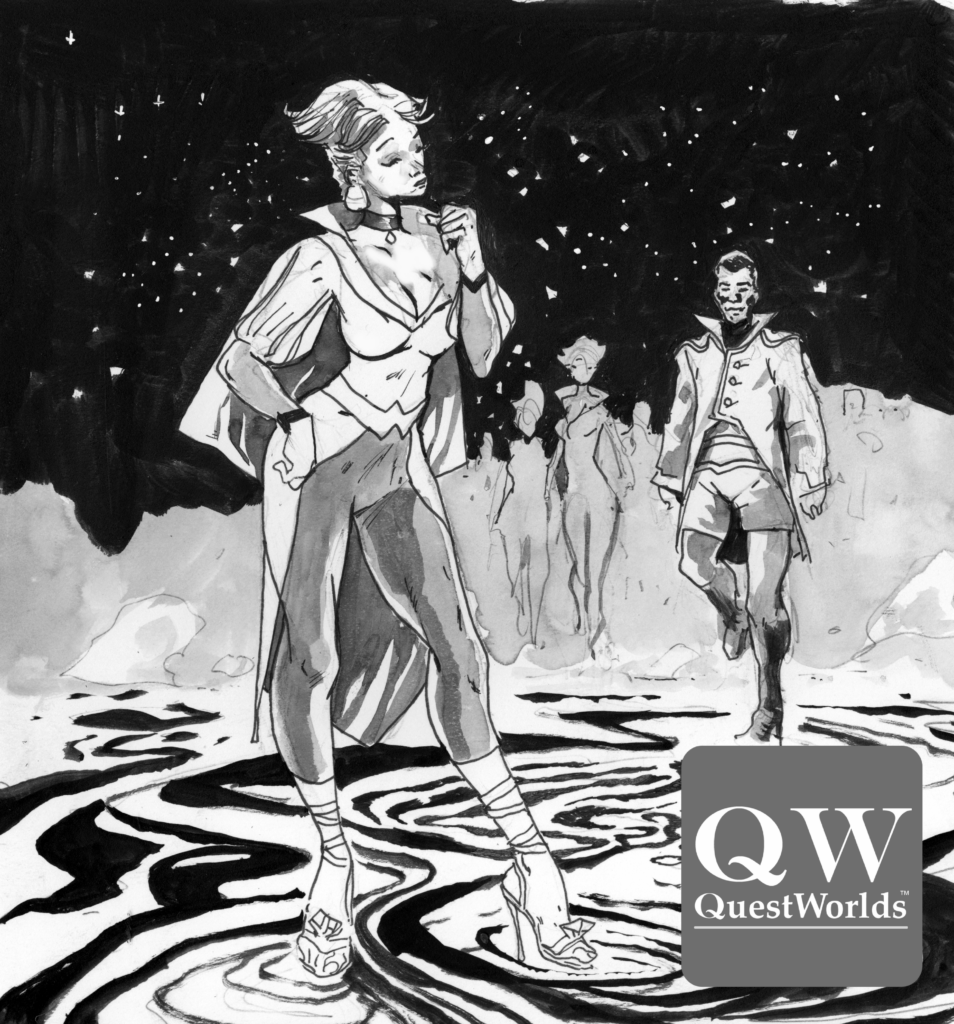
Ian Cooper, line editor for QuestWorlds, has posted a short update about the state of the game (originally written as a twitter thread):
Editing. I am working through the Core book with a development editor (Susan O’Brien). As I wrote most of it, I can’t also do development editing (that’s marking your own homework). We are about 50% through that process.
Art: All but two pieces now in, that’s on me to do art direction for the last two.
Once we have all that there are some conversations to be had around graphic design before going into layout.
I expect some tweaks/typos to go into the SRD. All minor, but I’ll probably leave it to the end when we can get the final set in and move to v1.0
Steady progress, though it always feels slow at the end. As always it will be done when it’s done.
As a reminder, QuestWorlds is the new form of the game formerly known as HeroQuest, formerly known as HeroWars. This is the rules-light, narratively focused game system that was created by Robin Laws and Greg Stafford for Gloranthan gaming in the early 2000s. Some people will argue that it is a much better fit for Glorantha than RuneQuest… (personally, I think something in the middle would be best, around the crunch level of Pendragon).

Anyway, you can play QuestWorlds today (and you have been able to for a long while, too) by checking out the SRD (System Reference Document), available here.
Jonstown Compendium

The Jonstown Compendium is Chaosium’s community content program for all Gloranthan games, hosted on DriveThruRPG. Disclaimer: all the relevant links are affiliate links that hopefully will let us cover some of the hosting and maintenance costs for the website and podcast! Thanks for using them!
Zenith Counters: Marble Phalanx
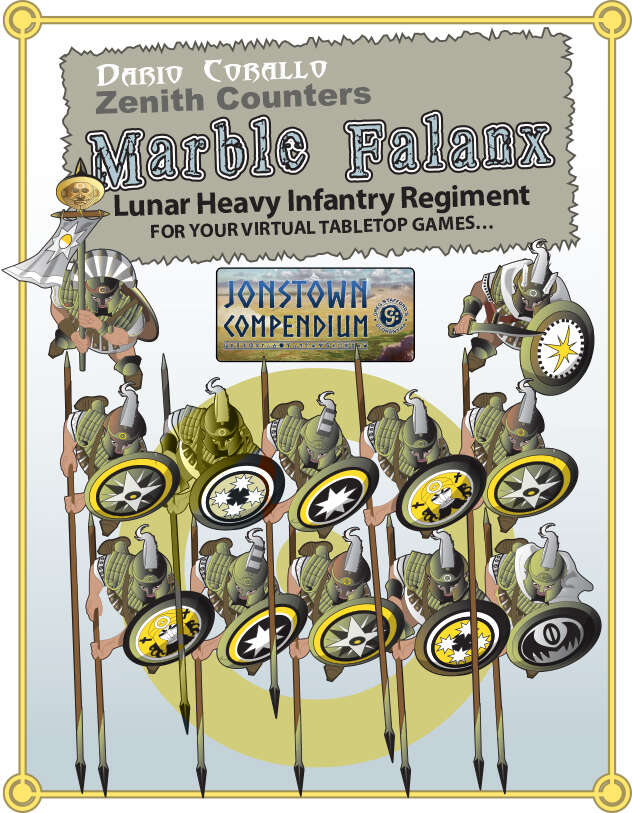
Dario Corallo keep churning out art and I don’t know how he does it so fast and so well! Anyway, he is back to his Zenith Counter series, which provides all kinds of tokens for your VTT needs. The latest entry is the Marble Phalanx (with a typo on the cover image… oops), a troop of soldiers that was stationed in New Pavis before Argrath re-conquered it.
Jeff’s Notes

Jeff Richard, the current mastermind on everything Gloranthan at Chaosium, is often posting notes and thoughts on the RuneQuest Facebook group. Here’s our curated list from the past week. A partial archive of these sources is compiled on the Well of Daliath.
Canonical Corpus
Here is Jeff’s list of “canonical” books for Glorantha. This isn’t the first time Jeff shares this list, and nothing much has changed since last time, so I won’t comment much on it (and besides, I’m very busy this week and I don’t have the time). Remember the context of this list:
Again, canon doesn’t matter AT ALL for running a game. As my original posts states: “this only matters if you want to write for Chaosium or get your work published by Chaosium.”
Remember that Jeff tweaked this list a bit based on which version of which text is best available (such as in PDF via Chaosium’s RuneQuest Classic reprints)… so if you’re wondering “why book X instead of book Y“, that’s generally why. There are also a few books that are only there because they have a chapter or a map about some particular area of Dragon Pass.
Note that with the exception of Troll Gods, Haunted Ruins, and Dorastor, all of the listed publications are currently available. And honestly Troll Gods is only there until the Cults Books come out. Haunted Ruins is listed because of the great map included in it. And Dorastor is there because it is the sourcebook for anyone doing stuff in Dorastor.
Jeff reminds us that the Sun County book, specifically on the Praxian Sun Dome, isn’t representative of all Sun Domes elsewhere — that one is an outlier, so “many other Sun Dome Temples are not nearly so xenophobic!“
Last, King of Sartar and the two original board games (White Bear & Red Moon and Nomad Gods) are listed as usable “as sources of inspiration rather than canon“. In particular, King of Sartar is deliberately self-contradictory, placing it in a unique position in the canon.
Here’s a relevant bit on the now superseded HeroWars and HeroQuest books of the early 2000s:
I tell people writing for Chaosium to not reference or rely on them. At all. Where they are right, there are better sources (such as the above list), but all of them have stuff that I would prefer not to have to edit out. Referring to the subcult of Desemborth the Thief or Daylanus the Conquering Wind or Gravlor the Gladiator – that’s just generating work for your editors.
[…] they are filled with things that have been rejected (like Misapplied Worship, or having to try to figure out the deep “real nature” of a cult before you can even use it in game), its millions of subcults (“Orlanth the Carpenter”? Really?), and other stuff that just makes an editors job nightmarish. Best to just ignore it entirely.
The RuneQuest companion is also in a similar situation:
Note that there’s a lot of wildly non-canonical material in the RQ Companion. And the stuff that is canonical is better presented elsewhere.
As for the Mongoose RuneQuest books, Jeff, half-jokingly (probably) answers that “there were no Mongoose publications.“
Anyway, read here for the nitty gritty details.
Now, as stated at the beginning, this is for writing Chaosium material. What about simply running a RuneQuest game? Jeff’s list is much shorter: the Starter Set or the core rulebook, and the Bestiary.
You might have noticed that these two books constitute our minimum assumption for what the listeners of the podcast have read. We try (and probably fail… but we try!) to explain everything else that isn’t explained in those two books.
Community Roundup
The community roundup is our highlight of interesting things being mentioned in the Glorantha-related Facebook groups, sub-Reddits, and other similar online places.
King of Dragon Pass is 23 Years Old
From A-Sharp, the publishers of King of Dragon Pass:
The original version of King of Dragon Pass was released on 29 Oct 1999. To celebrate this anniversary, the iOS version (updated with more content and streamlined play) is now 40% off on the iOS App store for a limited time!
By the time you read this, the offer might have expired, but the game is well worth its (very affordable) full price anyway. And personally speaking, I think a tablet is the best way to play this game… anyway, happy birthday KoDP!
Runeblogger on Tales of the Reaching Moon
Runeblogger writes in English again (yay!) to take a look at the Tales of the Reaching Moon, a Gloranthan fanzine from the 1990s generally credited for keeping the Gloranthan fandom alive in a dark period of the game setting’s history, and for producing a whole new generation of Gloranthan authors… many of which are now working for Chaosium, or publishing books on the Jonstown Compendium. Even Greg Stafford and Sandy Petersen contributed a few articles to the fanzine.
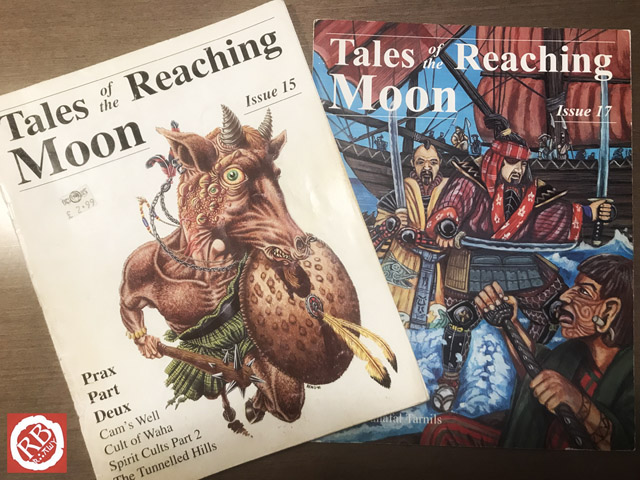
They started by publishing two issues annually, and from 1995 onwards only one every year, but the quality and page number increased little by little. For example, starting from issue 12 covers became full-colour. The main editor of this fanzine was David Hall, who started out with a couple of friends, writing and laying out the fanzine. However, from the fourth issue onwards several die-hard fans joined the team like Rick Meints, who took care of layout, or Michael O’Brien, who edited, wrote, and distributed the fanzine in Australia. I wonder if they had believed anyone telling them at that point that they would one day become president and vice-president of Chaosium (!).
Runeblogger tells you everything you need to know about the context of the fanzine’s publication, its contents, and its legacy. It’s a great read for any Gloranthaphile who is only vaguely aware of Reaching Moon Megacorp and its pivotal role in the setting’s history.
Writing Riddles: Babalon and the Red Goddess
Andrew Logan Montgomery published his second article on the topic of Illumination. The first part looked at inspirations for what Illumination is, how it possibly drives some of the main themes of Glorantha as a setting for telling stories, why it’s considered “bad” in most Gloranthan societies, and how the Lunar Empire managed to integrate it.
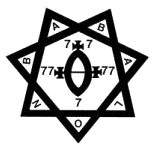
This is what the second part focuses on, viewed through the lens of gnosticism in general, and Aleister Crowley’s Thelema in particular. We are shown the Red Goddess as Babalon, the Scarlet Woman and Mother of Abomination (a comparison that Jeff already made in the past), we get a walk through various numbers of souls, we learn more about Chaos, Tarot cards, the Whore of Babylon, and ancient female deities riding big beasts…
Anyway, Andrew is still working on “The Final Riddle”, his next RuneQuest campaign which deals, of course, with illumination and madness.
GoblinCaveTV Creates Some RuneQuest Characters
Live roleplay and “Roll20 embassador” group GoblinCaveTV has recently done a live stream in which “Karsh the Goblin” creates a RuneQuest character. The video is currently only on Twitch, but there’s a good chance it later shows up on their YouTube channel too.

Since the host spends a lot of time explaining a lot of things to the audience, the overall process takes almost 3 hours and a half, but of course it would be quite a bit faster if you did it on your own… although we all know that RuneQuest character creation is extremely slow compared to most games (which is sadly ironic given how deadly RuneQuest can be). Karsh ends up with a large, Orlanth-worshipping Sartarite warrior.
They also have a two-episode actual play of “A Rough Landing” from the RuneQuest Starter Set.
GMSMagazine’s RuneQuest “Blast from the Past”
YouTube channel GMSMagazine has a video comparing 1984’s RuneQuest 3rd edition delux box set with 2022’s RuneQuest Glorantha Starter Set. Of course, it’s not an apples-to-apples comparison, which the host notes at the beginning, but the point is really to have fun looking at how RuneQuest has evolved, and how production quality changed over almost four decades.
It’s fun to see the host realize how the four books of the Starter Set make up a big map when you turn them over…
Some Dan Barker Work in Progress
Dan Barker has shared this cute little ice demon:
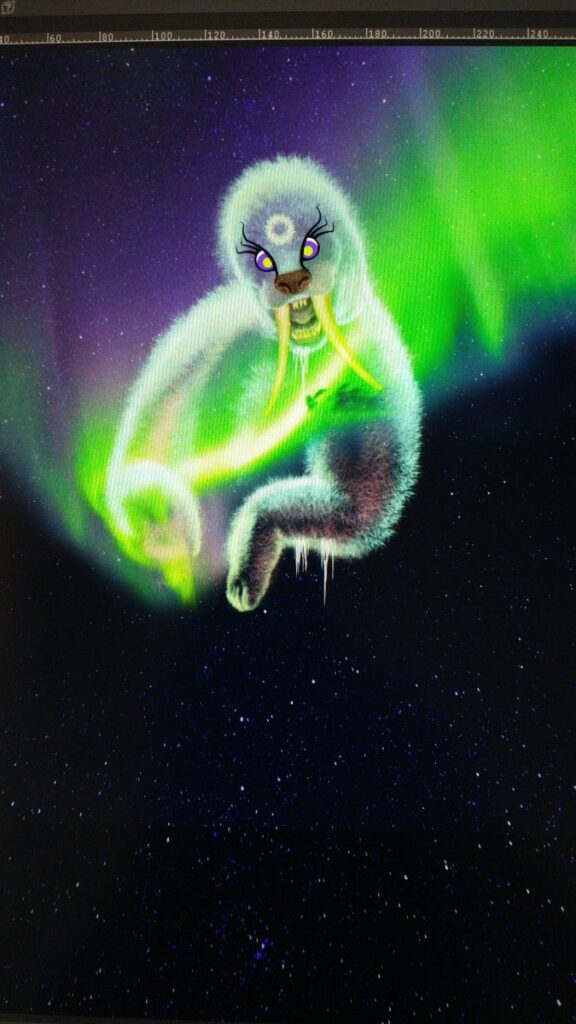
Decided to revisit some pencils I had in a drawer, of a Hollri (ice demon) being worshipped by Uzhim (snow trolls) on Valinds’ Glacier. Not quite there, but rough direction.
I’m looking forward to the full drawing!
Elsewhere on Arachne Solara’s Web
Not everything is about Glorantha, although most things are! Here are loosely relevant things that we found on the interwebs.
Nijmegen Helmet
Do you have some important Lunar NPC in your campaign? Do you want to make him or her super bad-ass? How about a cool looking mask helmet?
The Nijmegen Helmet is a Roman helmet that was probably worn by some elite cavalry soldier. It dates back to the first or second century BCE and was found in the Dutch city of Nijmegen. Parts of it are made of iron, while others are made of bronze or brass. The right cheek apparently has a name scratched on it (thought to be “Marcianus”). I suppose it’s easy to misplace your super cool metal mask helmet when you’re in the elite cavalry and everybody has super cool metal mask helmets. Hashtag Roman Military Life.
There is no information on who the five figures are on the crown, but we all know these are five of the Seven Mothers. Maybe two fell off. Or maybe that soldier didn’t feel like having Danfive Xaron and She Who Waits, or whatever, on his helmet. Or maybe the helmet crafter messed up.
You can find this item in the Museum Het Valkhof Nijmegen. Since 2020, the city even has a big replica of this helmet as a piece of urban art:

Thank you for reading
That’s it for this week! Please contact us with any feedback, question, or news item we’ve missed!


